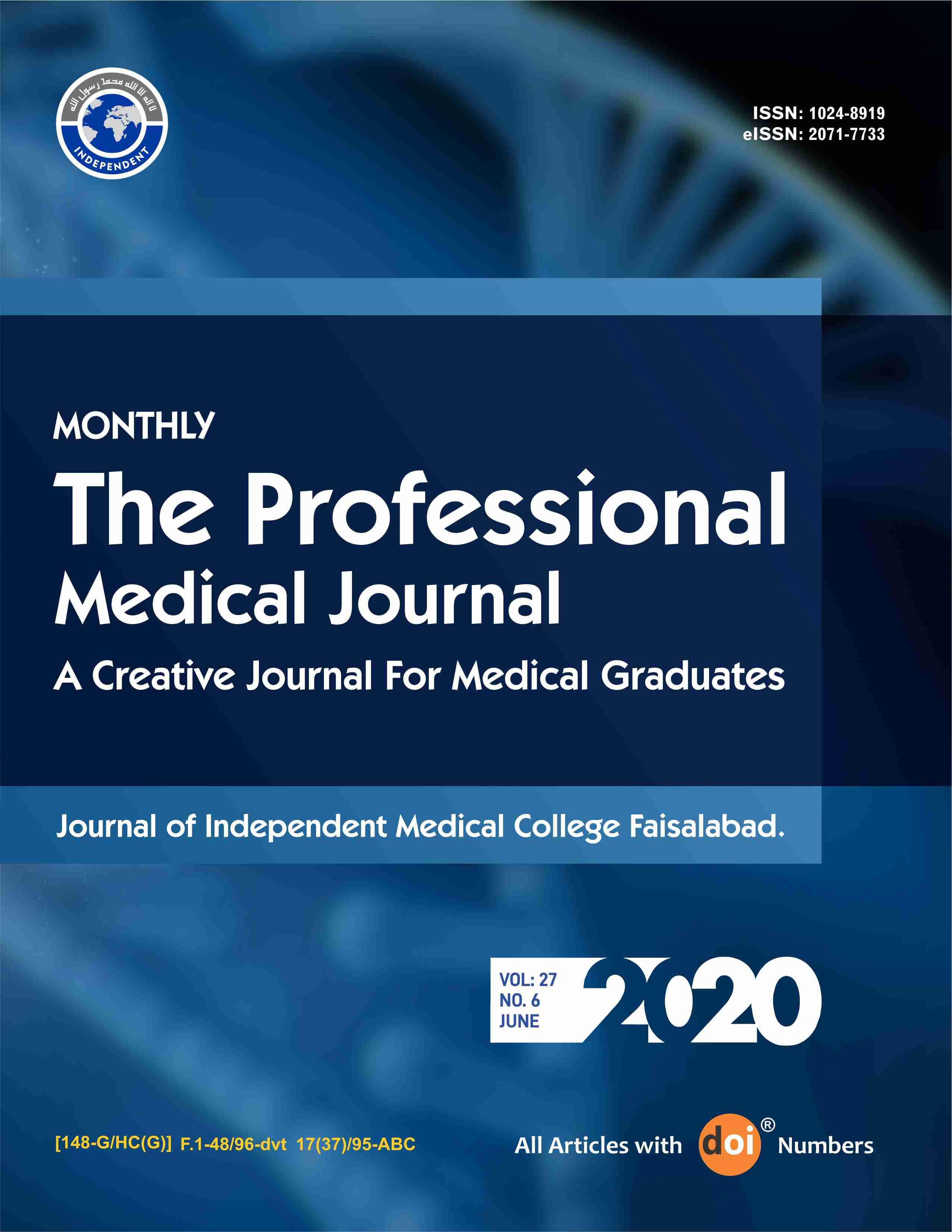Correlation of vitamin D3 and serum calcium level with left ventricular hypertrophy patients.
DOI:
https://doi.org/10.29309/TPMJ/2020.27.06.3697Keywords:
Hypertension, 25-Hydroxycholecalciferol, Left Ventricular Hypertrophy, Serum Calcium, Vitamin D3Abstract
Extra cellular fluid (ECF) Ca++ performs vital functions such as blood clotting, cardiac muscle contraction, second messenger for hormone and neurotransmitter release. Total Ionized serum Ca++ is 4.65 to 5.25 mg/dl Ionized Ca++ performs vital physiological functions such as maintenance of plasma membrane integrity. Objectives: The present study is the first research being reporting on the association of LVH (left ventricular hypertrophy) due to essential hypertension with serum vitamin D3 and serum calcium levels. Study Design: Cross Sectional Research. Setting: Medicine/Cardiology department, Peoples Medical University Hospital, Nawabshah. Period: 1st January 2017 to 30th June 2017. Material & Methods: To assess the correlation of 25-hydroxycholecalciferol and serum calcium with left ventricular hypertrophy in essential hypertension. The thickness of inter ventricular septum (IVS) and posterior wall (PWT) on echocardiography were used to categorize LVH into mild, moderate and severe. Results: Male predominated in the present study. Male to female ratio was 1.65:1. Male and female comprised 62.33% and 37.67% respectively. Chi square value (X2-value) was 14.7 with significant p-value. Mean +SD of 25-hydroxycholecalciferol in mild moderate and severe LVH were noted as 30+7.8, 24.7+7.7 and 14.9+6.1 ng/dl respectively. Mean +SD of serum calcium in mild moderate and severe LVH were noted as 9.20+0.51, 8.93+0.72 and 8.678+0.44 mg/dl respectively. Conclusion: In subjects with left ventricular hypertrophy in essential hypertension the serum levels of vitamin D and calcium were low. There was a negative correlation with left ventricular hypertrophy and serum vitamin D and serum calcium. Thus it could be concluded that in subjects with left ventricular hypertrophy the low levels of serum vitamin D could be an independent modifiable risk factor.


